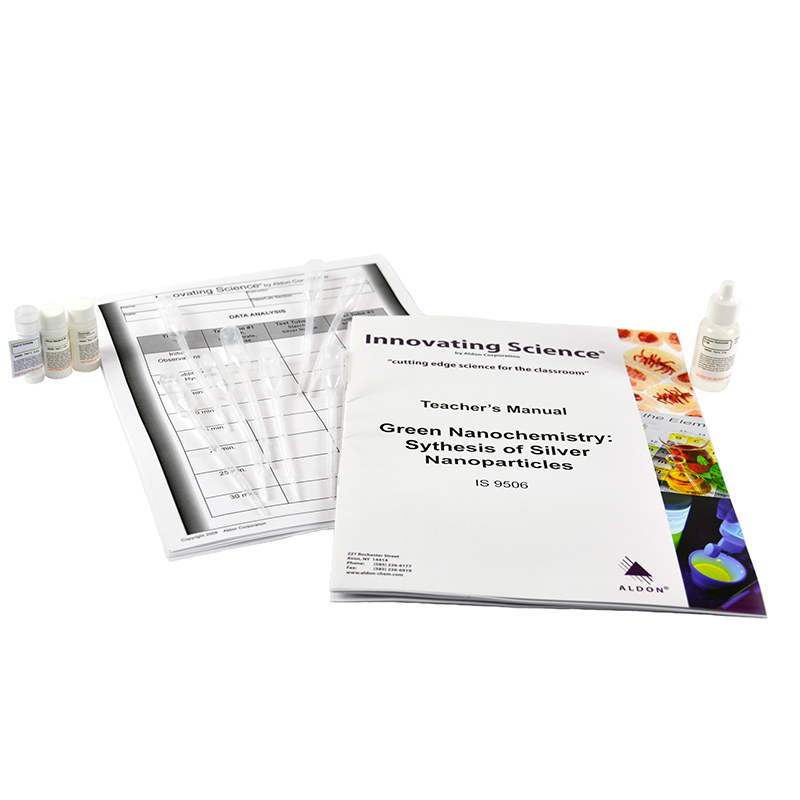


Nanotechnology is a field of technology that is described as the control and manipulation of matter in the 1 to 100 nanometer (nm) range. A nanometer is one billionth of a meter, or one millionth of a millimeter. To put it in perspective, an average sheet of copier paper is about 100,000 nanometers thick so a nanometer is 100,000th the thickness of a piece of copier paper. Certain materials, when prepared at nanoscale levels, display different physical and chemical properties than those of the same materials prepared on a larger scale. In this activity, students synthesize silver nanoparticles from silver nitrate. The particles are synthesized in glucose and starch, as opposed to the more hazardous reagents typically employed.
Resources

